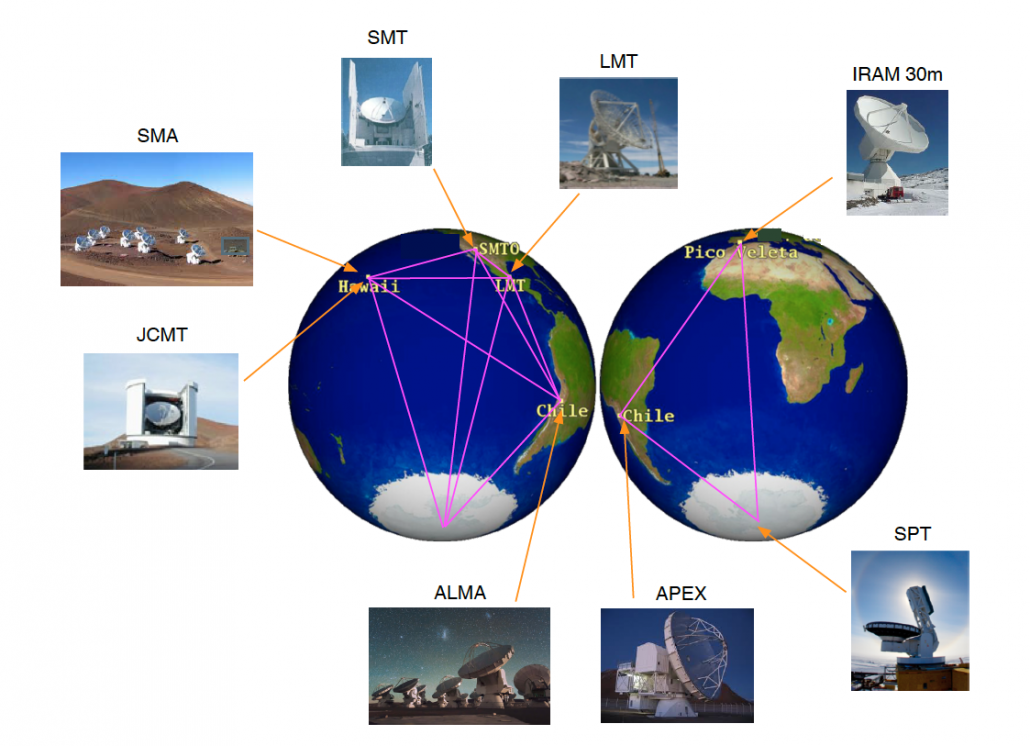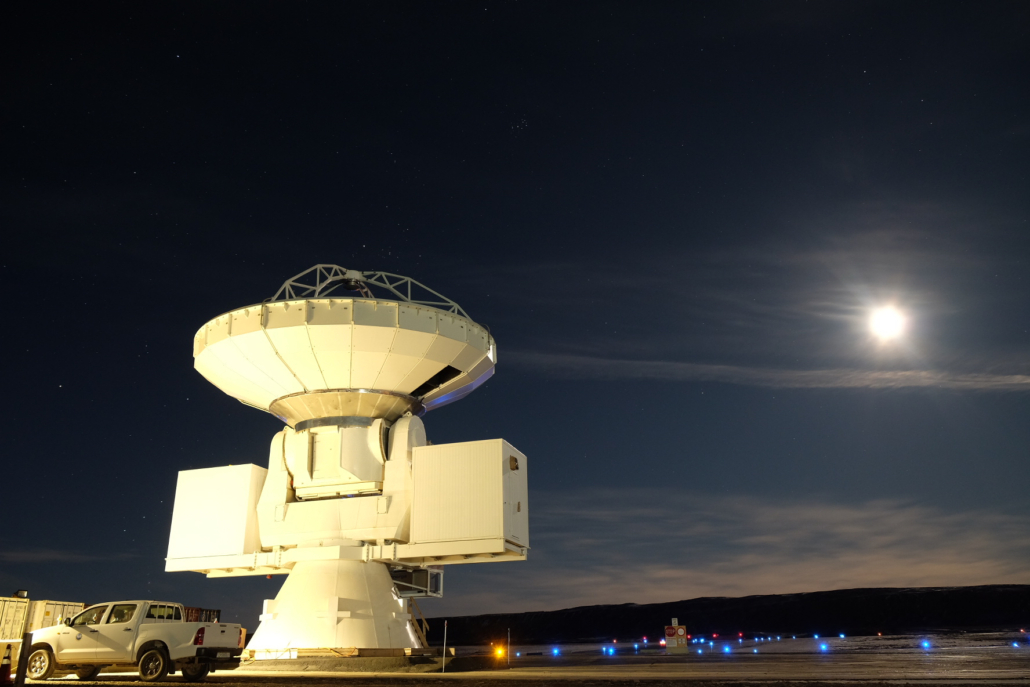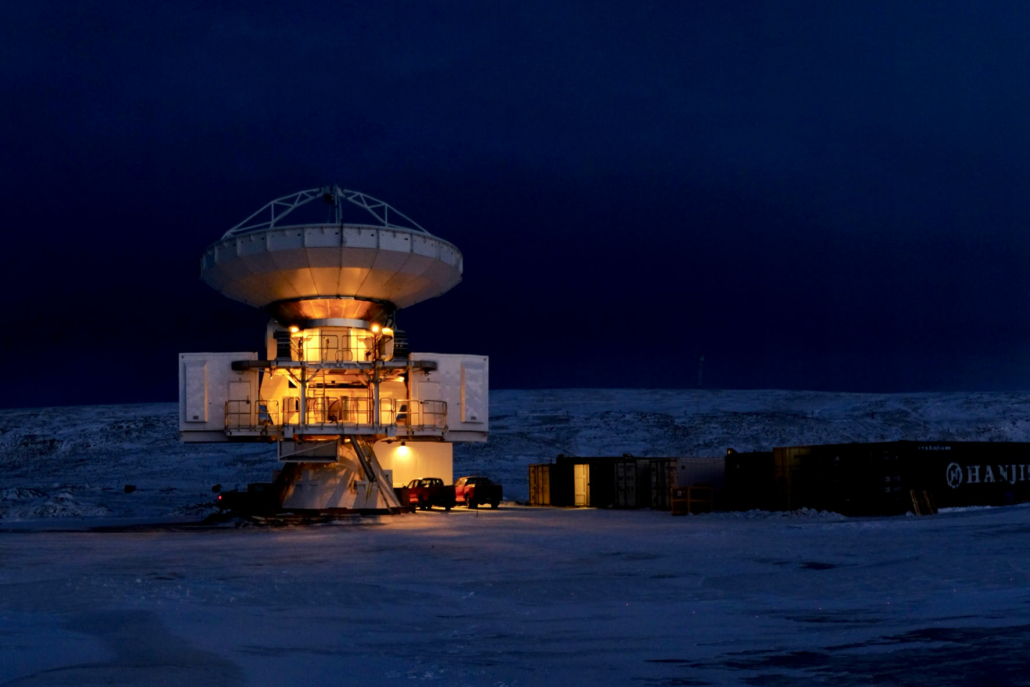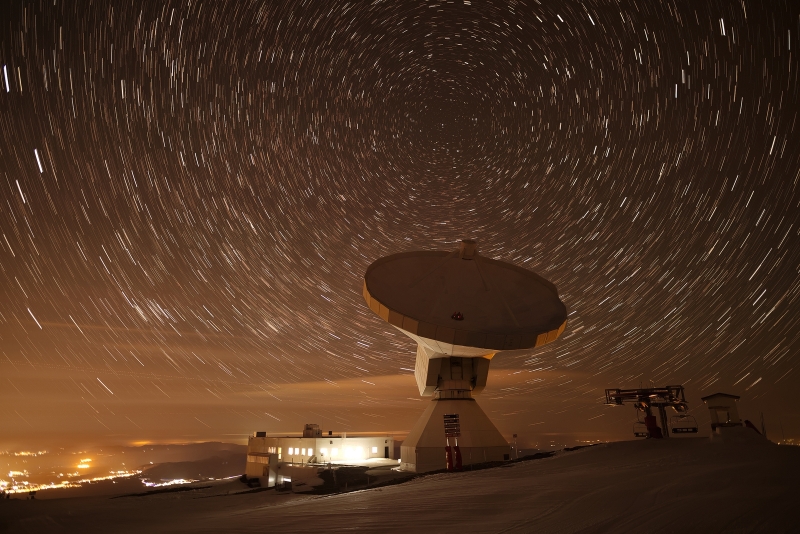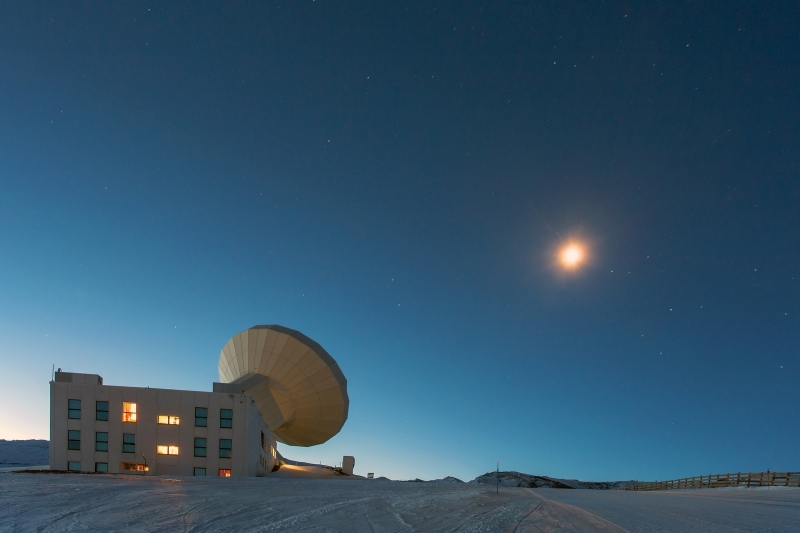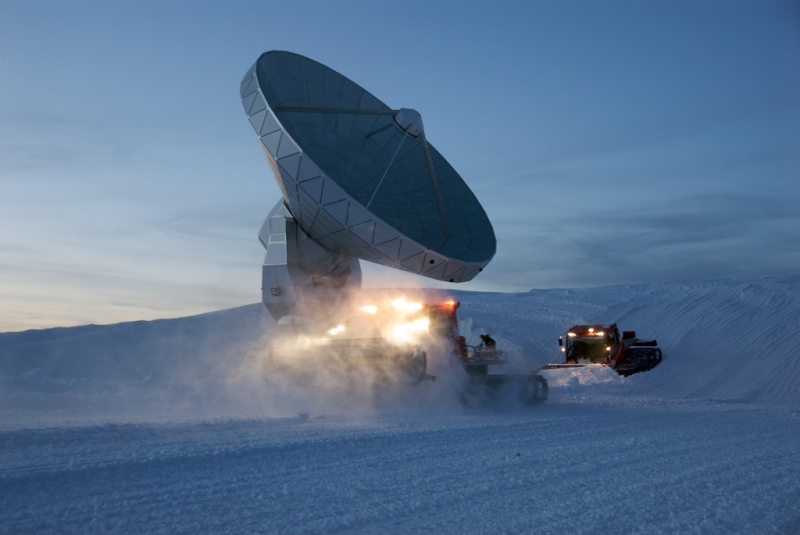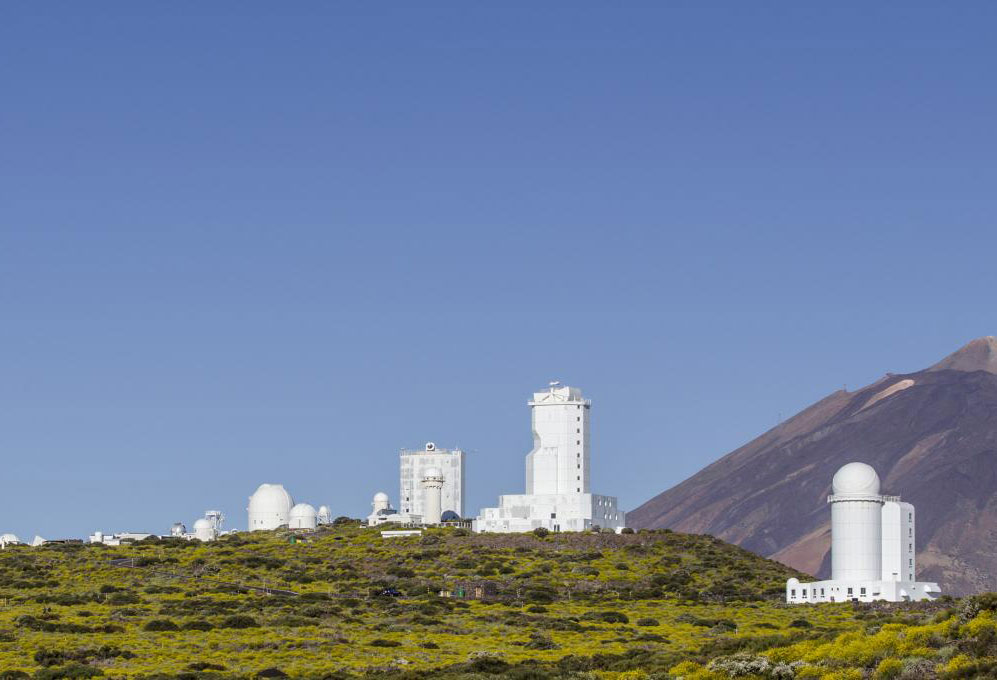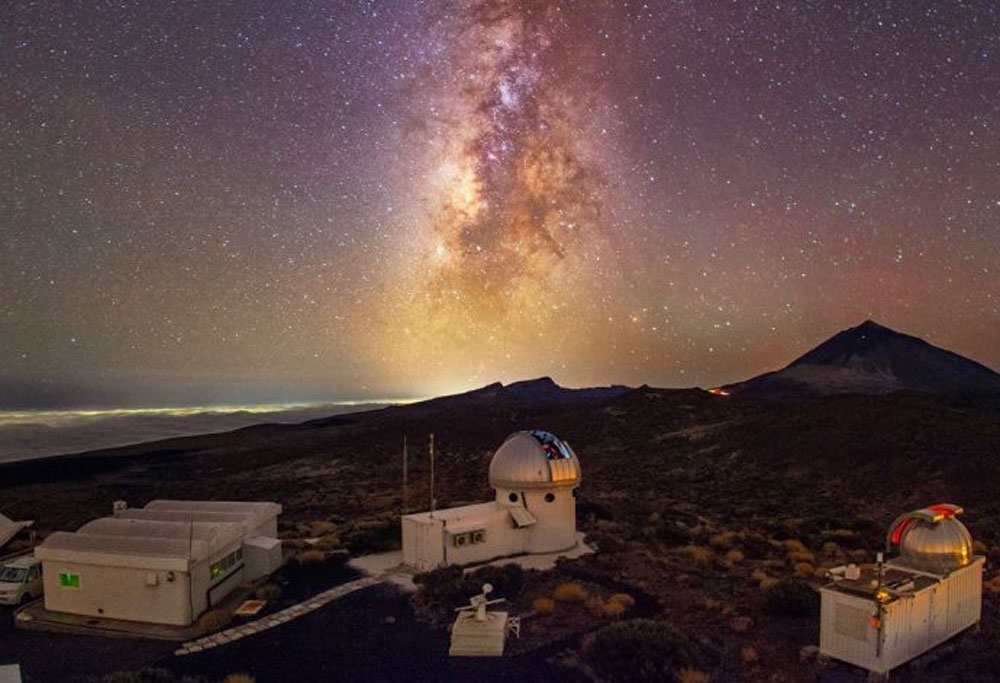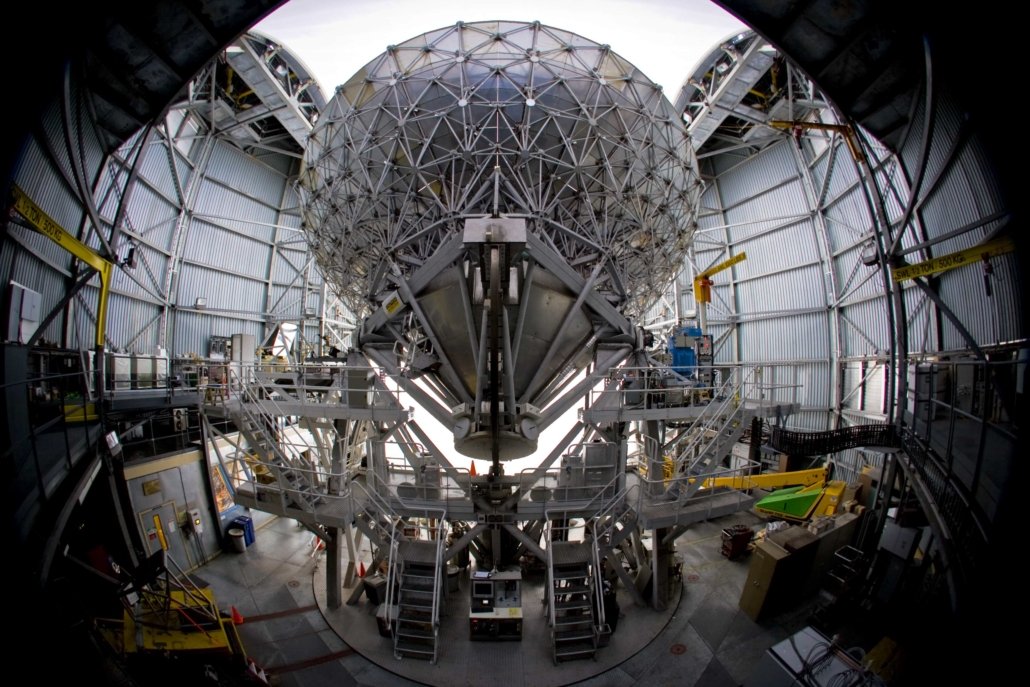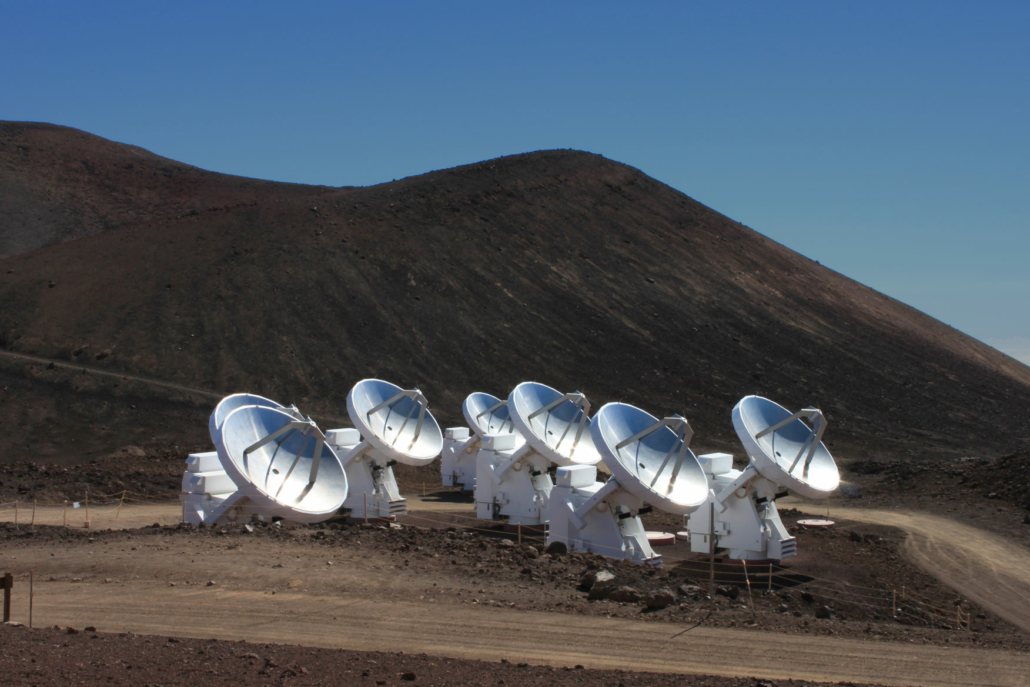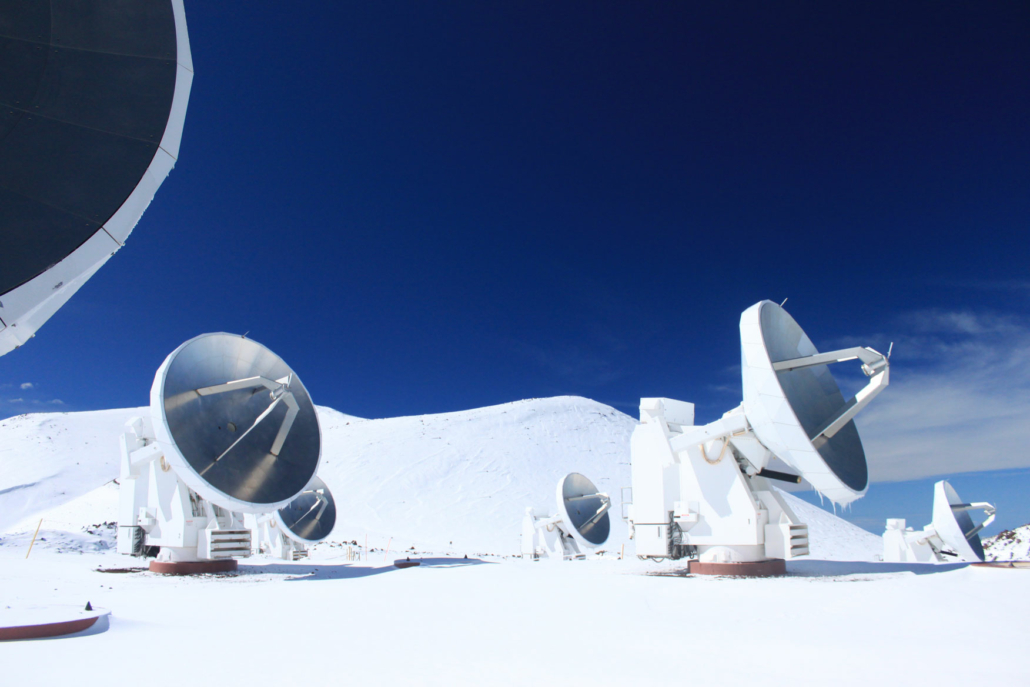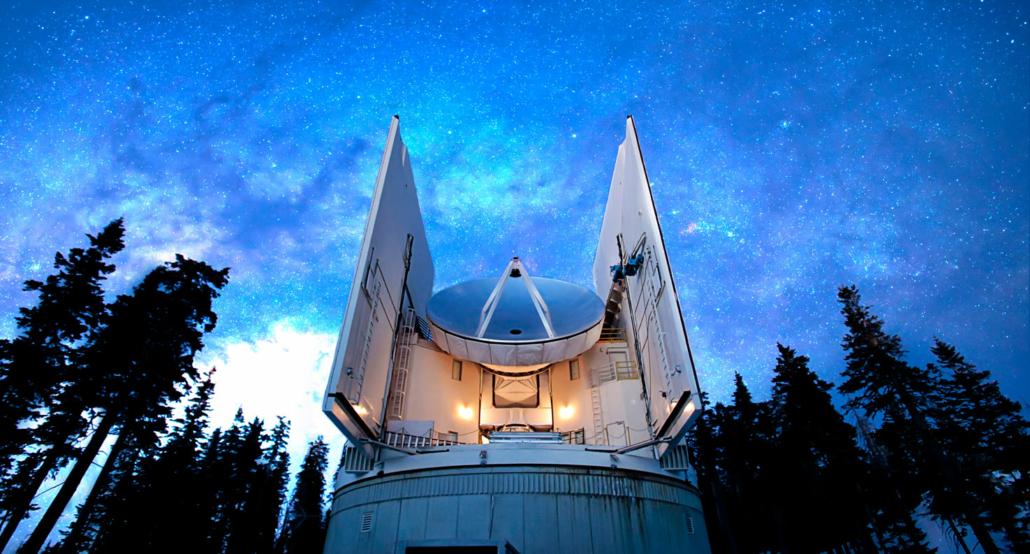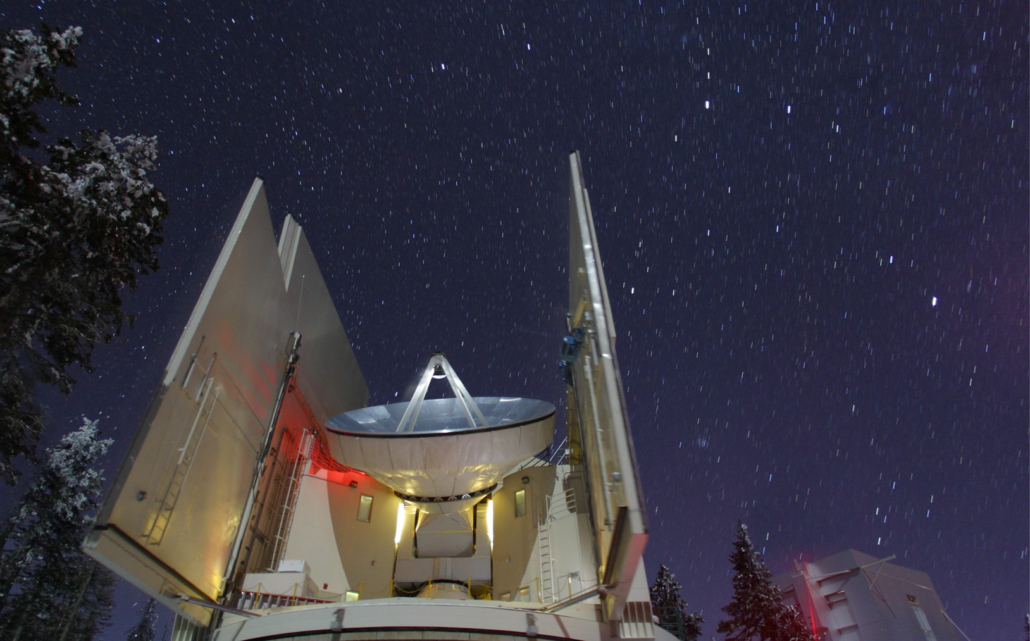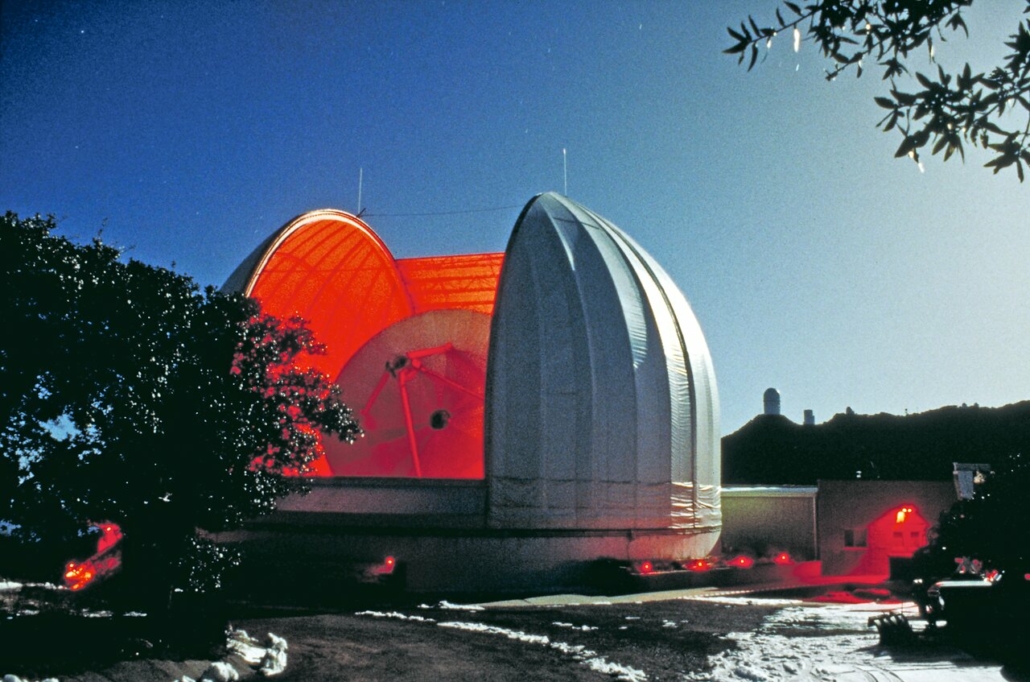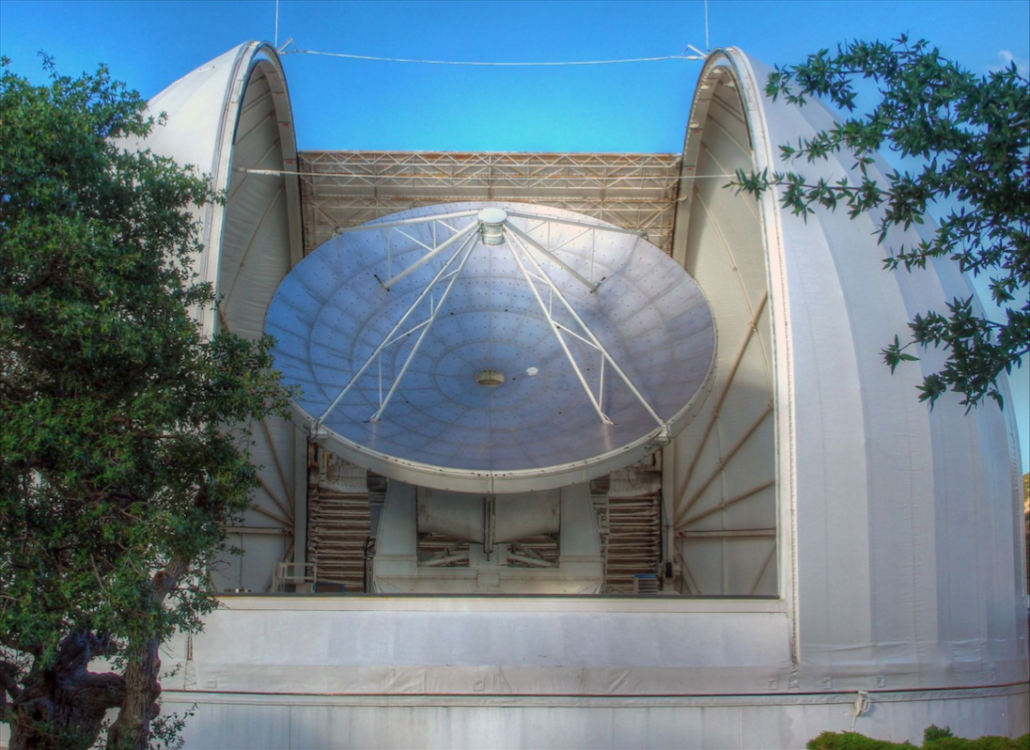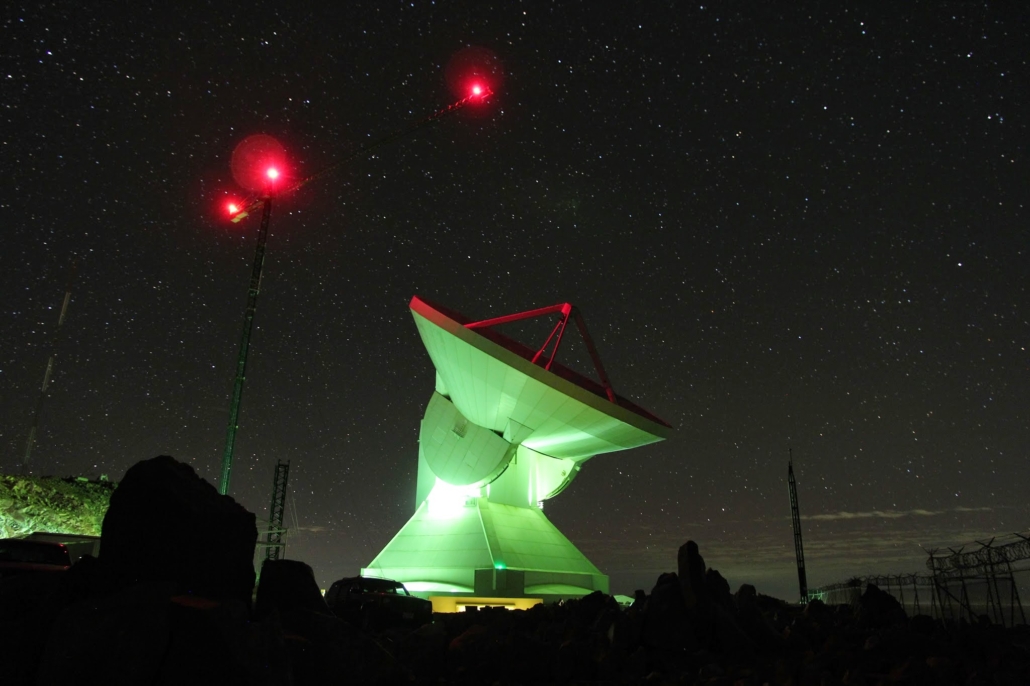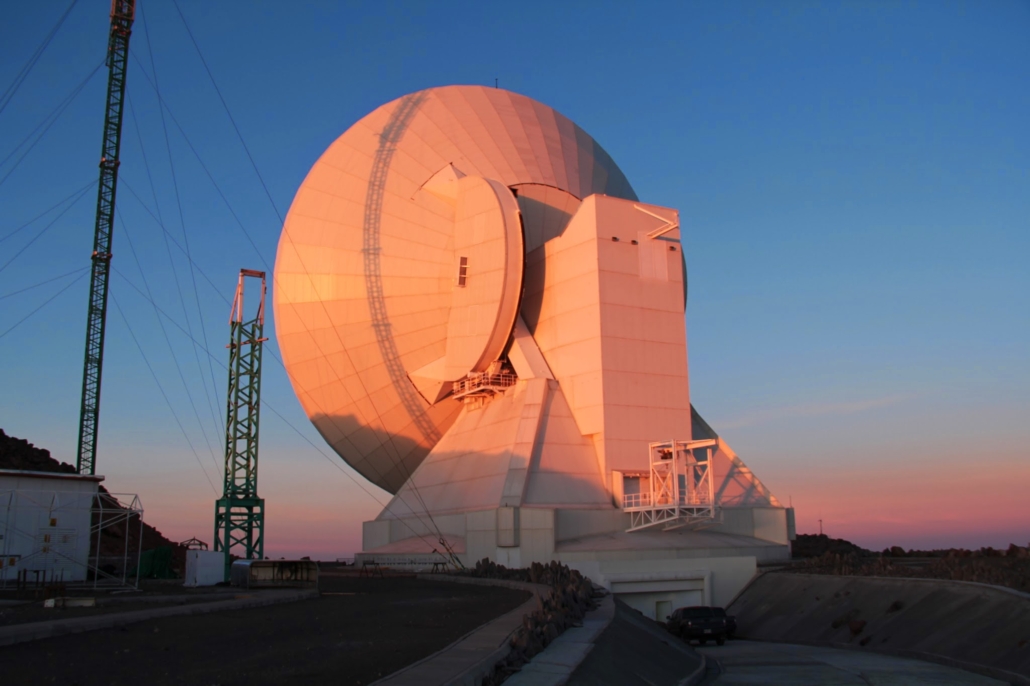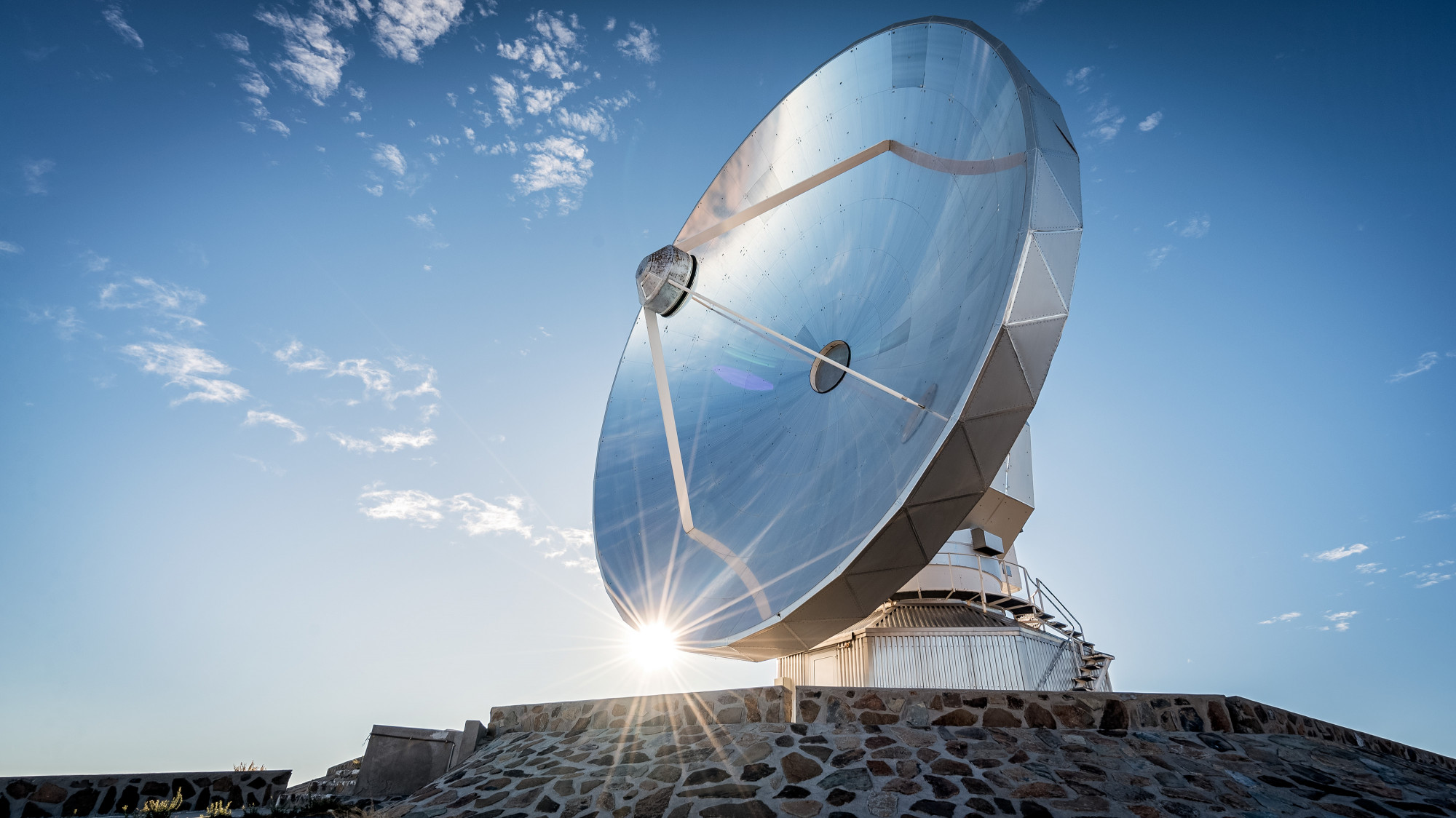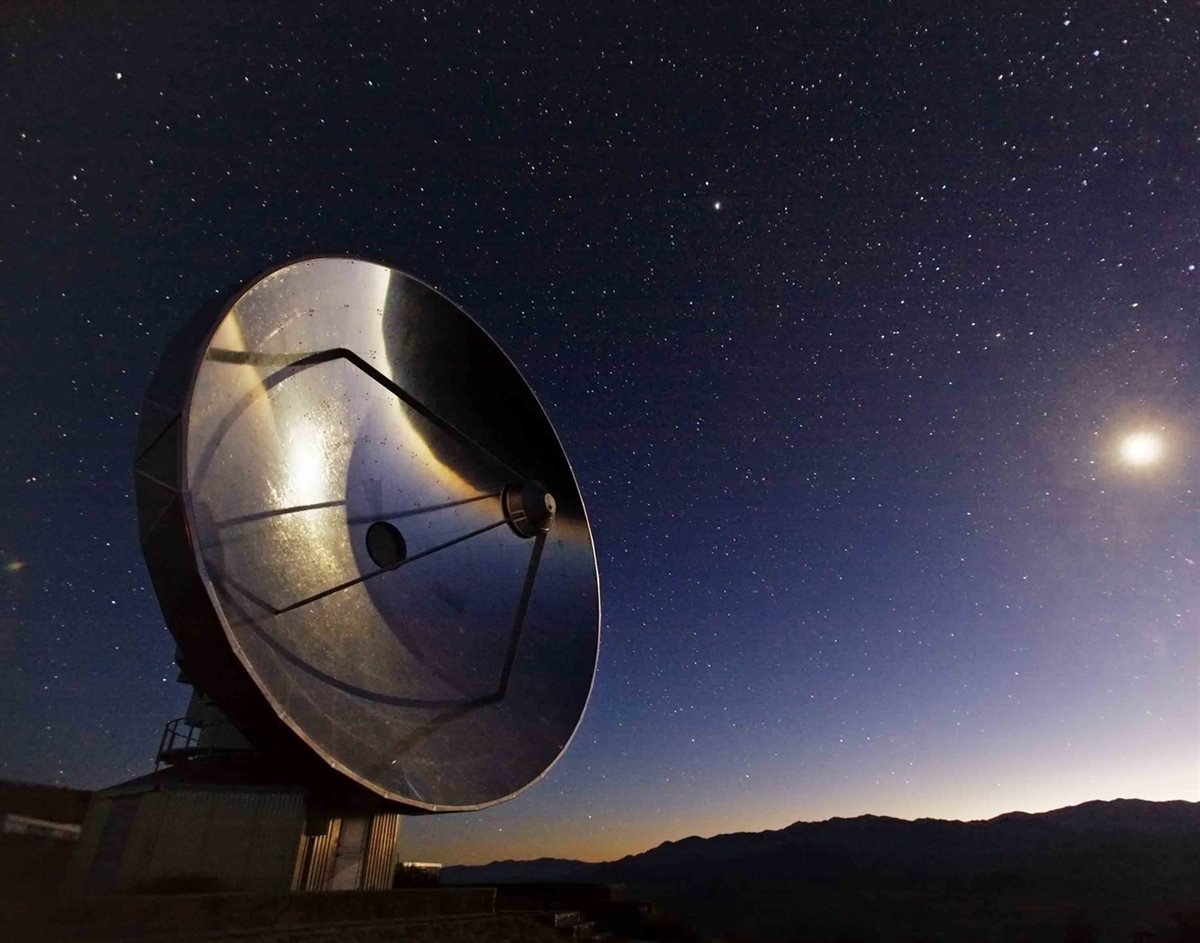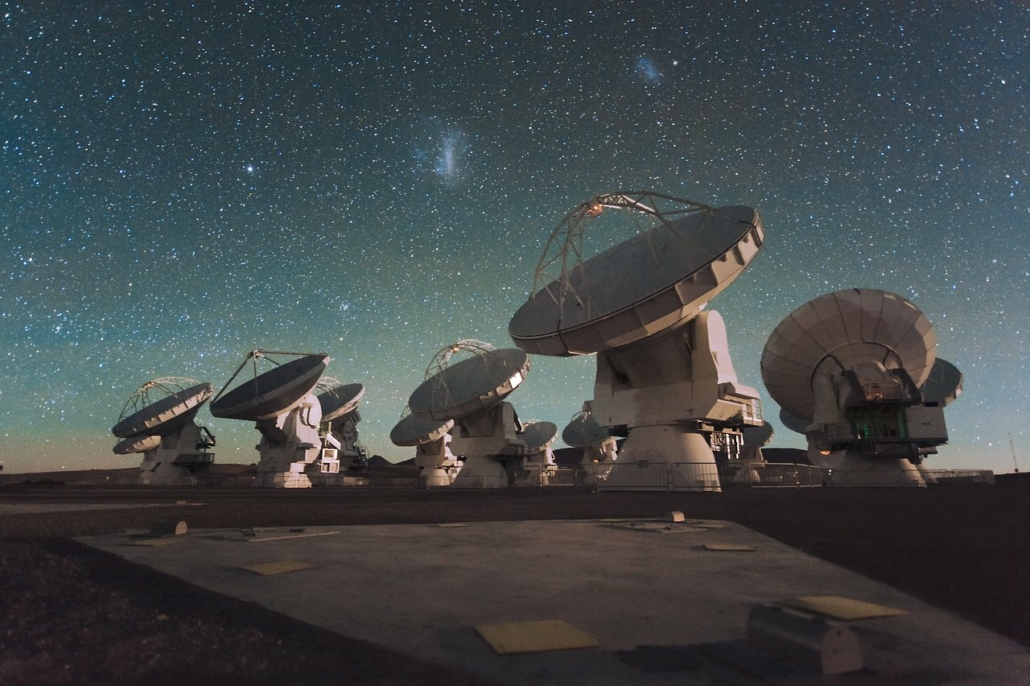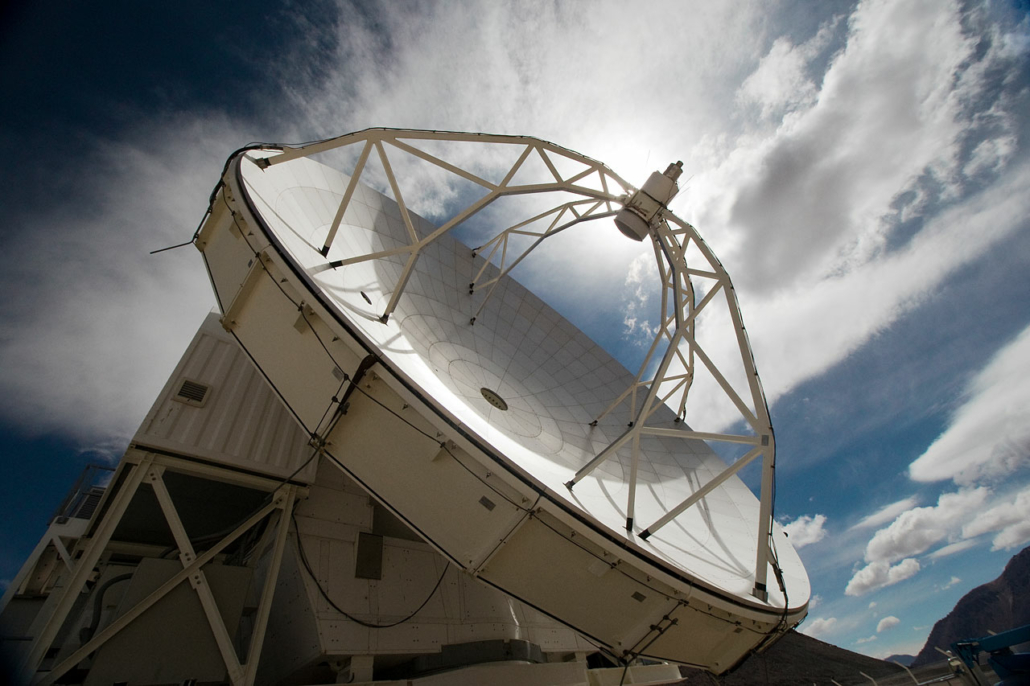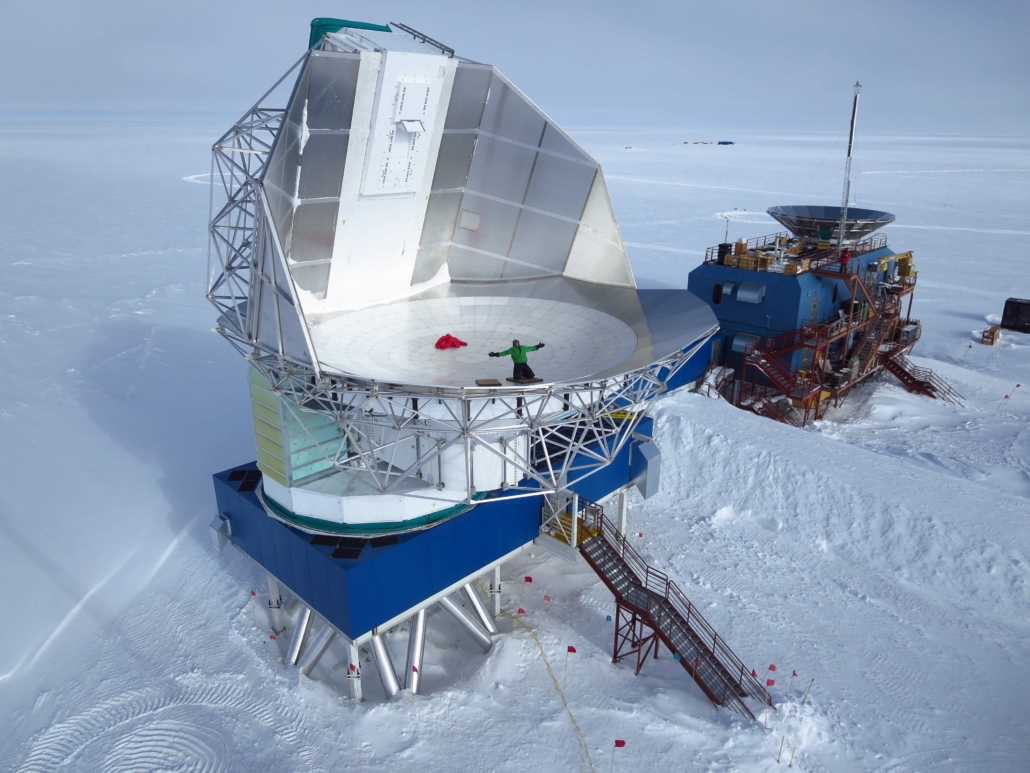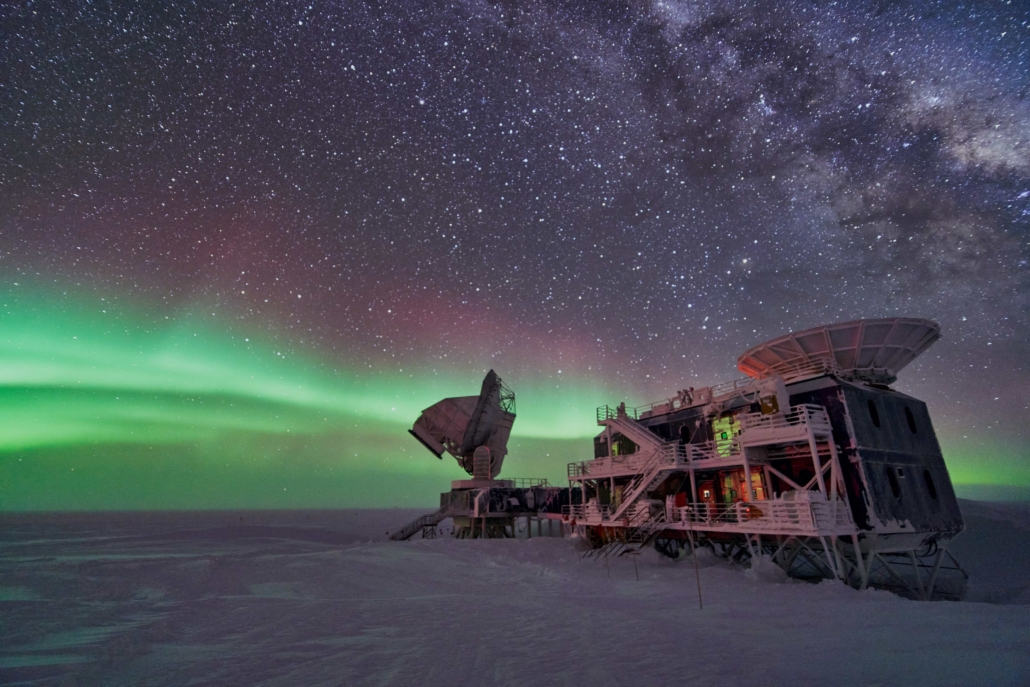Observatories used within the EHTC
The EHT includes observatories in Europe, USA, Mexico, South America and South Pole. The first observations of a black hole were scheduled for April 2017. In order to interpret the reconstructed image of a black hole, it is important to simulate VLBI observations. With VLBI simulation software, we can generate mock data for a given input black hole model image or movie and specified locations and properties of the telescopes. Below you can find out, which arrays participated each year.
2017
The following arrays participated in 2017: LMT, SMT, SMA, JCMT, ALMA, APEX, SPT, IRAM 30m
2018
2021
2022
The following arrays participated in 2022: LMT, PV, GLT, SMT, APEX, ALMA, JCMT, SMA, SPT, NOEMA, KP (UArizona ARO 12-meter Telescope)
Europe
GLT
The Greenland Telescope (GLT) project represents a creative way to conduct state-of-the-art science. The 12-meter radio antenna was originally built as a prototype for the Atacama Large Millimeter/Submillimeter Array (ALMA) project, currently in operations in Chile.
By repurposing this telescope to Greenland, astronomers can take advantage of the near-ideal conditions of the Arctic to study the Universe at specific radio frequencies.
The location at National Science Foundation’s (NSF) Summit Station enables joint use of critical infrastructure and reduces costs. It also allows triangulation with the Submillimeter Array in Hawaii, ALMA and other radio dishes, to become a part of the Event Horizon Telescope, a project aiming to generate an image of a black hole’s shadow for the first time.
IRAM
The 30-meter telescope on Pico Veleta in the Spanish Sierra Nevada is one of the two radio astronomy facilities operated by IRAM. Built in only four years (1980 to 1984) at an elevation of 2850 meters, it is one of today’s largest and most sensitive radio telescopes for tracing millimeter waves.
The telescope is a classic single dish parabolic antenna, which allows the exploration of extended cosmic objects such as nearby galaxies and interstellar clouds. Due to its large surface, the 30-meter telescope is unrivalled in its sensitivity and is well adapted to detect weak sources. The surface of the parabola is adjusted to a precision of 55 micrometers, corresponding to the width of a human hair.
The IRAM 30-meter telescope is the world’s most sensitive single telescope for radio waves. It is the only observatory in Europe participating in the 2017 EHT observing campaign.
NOEMA
Located in the French Alps on the wide and isolated Plateau de Bure at an elevation of 2550 meters, the telescope consists of twelve antennas, each 15 meters in diameter. Each antenna is equipped with state-of-the-art high-sensitivity receivers. Two tracks, extending on a north-south and east-west axis, enable the antennas to be moved up to a maximum separation of 760 meters.
The NOrthern Extended Millimeter Array (NOEMA) has doubled the number of antennas of its predecessor from six to twelve. The first of the six new NOEMA antennas was inaugurated end of September 2014. Since then, five others have joined the array. As the observatory has now its complete number of antennas and thus reached maximum sensitivity, the sharpness of its radio images will further increase by large margins when the extensions of the antenna tracks are completed, a step which will conclude the NOEMA construction phase. Once finished, NOEMAs spatial resolution will be four times higher and its sensitivity ten times better than those of its predecessor. NOEMA will be a revolutionary instrument and a high-precision tool allowing astronomers to explore some of the most fundamental questions of modern astronomy.
Observatorios de Canarias
The Observatorios de Canarias, in the Canary Islands, is the largest European Observatory, and offers excellent observing conditions for sub-millimeter observations.
The Instituto de Astrofísica de Andalucía (CSIC), together with the Instituto de Astrofísica de Canarias, and other partners in Spain, Europe, and the US, are planning to install a new EHT antenna in the Canary Islands.
This antenna, together with the AMT, will provide an important expansion of the European contribution to the EHT, significantly increasing the EHT sensitivity for observations of SgrA* and M87*.
The observatory is in the early planning stages, and is expected to see first light in 3 to 5 years.
USA
JCMT
The East Asian Observatory operates the James Clerk Maxwell Telescope (JCMT) located near the summit of Maunakea on the Big Island of Hawaiʻi.
The JCMT is the largest single-dish telescope in the world dedicated to detecting submillimetre radiation. Its 15-metre (50-foot) dish looks at the sky with instruments that tell us about the cold Universe in different ways. Operating between the infrared and radio waves, observing at wavelengths between 1.4 and 0.4mm, it uses some of the most sensitive and sophisticated instrumentation to detect the coldest material in the Universe, only a few tens of degrees above absolute zero. Water vapor in the Earth’s atmosphere intercepts this radiation, making the high and dry site of Maunakea vitally important for the research performed at the JCMT.
SMA
The Submillimeter Array (SMA) is an 8-element radio interferometer located near the summit of Maunakea in Hawaii. Operating at frequencies from 180 GHz to 420 GHz, the 6 m diameter dishes may be arranged into configurations with baselines as long as 509 m, producing a synthesized beam of sub-arcsecond width. Each element can observe with two receivers simultaneously, with up to 48 GHz total bandwidth. The digital correlator backend provides a uniform resolution of 140 kHz.
The Submillimeter Array is a joint project between the Smithsonian Astrophysical Observatory and the Academia Sinica Institute of Astronomy and Astrophysics and is funded by the Smithsonian Institution and the Academia Sinica.
SMT
The Arizona Radio Observatory (ARO) currently operates two radio telescopes in southern Arizona: the new UArizona ARO 12-meter Telescope (12M), which is an ALMA prototype antenna located 50 miles southwest of Tucson on Kitt Peak, and the UArizona ARO Submillimeter Telescope (SMT) located on Mt. Graham in south eastern Arizona.
Combined, the two telescopes routinely cover the entire millimeter and submillimeter windows from about 4.6 mm to about 0.6 mm, and at the UArizona ARO Submillimeter Telescope observations can be made all the way to 0.3 mm with PI instruments.
The telescopes are operated around-the-clock for about 9 to 10 months per year for a combined 10,000 hours per observing season (about 1500 hours are dedicated to sub-mm wavelengths at the UArizona SMT).
The ARO offices are centrally located in the Steward Observatory building on the campus of the University of Arizona in Tucson Arizona.
UArizona ARO 12-meter Telescope
The Department of Astronomy and Steward Observatory of the University of Arizona operates the Arizona Radio Observatory: UArizona ARO 12-meter Telescope (seen above), which is an ALMA prototype antenna located 80 km (50 miles) southwest of Tucson on Kitt Peak, and the Submillimeter Telescope (SMT) located on Mt. Graham in southeastern Arizona.
The UArizona ARO 12-meter Telescope was previously the European ALMA prototype antenna from the European Southern Observatory and was transported to Kitt Peak National Observatory in Arizona in 2013. This telescope is the only millimeter-wavelength telescope in the U.S. operated full-time as a national facility.
Mexico
LMT
The Large Millimeter Telescope (or Gran Telescopio Milimétrico Alfonso Serrano) is the world´s largest single-dish steerable millimetre-wavelength telescope designed specifically for astronomical observations in the wavelength range of 0.85 – 4mm. This binational project between México and the United States of America represents the largest and most complex scientific instrument constructed in México.
Situated on the summit of Volcán Sierra Negra at an altitude of 4600 meters, the LMT has begun its exploration of the physical processes that lead to the formation and evolution of planetary systems, stars, black-holes and galaxies thoughout the 13.7 billion year history of the Universe.
South Africa
AMT
The Africa Millimetre Telescope (AMT) project is co-led by two teams at the Radboud University and the University of Namibia. The cooperation aims at realizing a 15-m single-dish radio telescope on the Gamsberg mountain in Namibia. It will be built according to a tried-out design and will be equipped with last-gen instruments. Similar telescopes have already been realized at the European Southern Observatory (ESO) in Chile and at the Institut de Radioastronomie Millimétrique (IRAM) NOEMA Observatory.
A telescope in Southern Africa will improve the quality of the image and make the EHT network more stable. Southern Africa has the benefit that it’s centrally located between the big telescopes in Europe, Latin America, North America, and Hawaii, and by which it provides new and essential connections to major nodes across the global network. Furthermore, the center of the Milky Way is right overhead at that location, providing the longest and least disturbed view of the black hole in the center of our own galaxy, Sagittarius A*.
South America
ALMA
High on the Chajnantor plateau in the Chilean Andes, the European Southern Observatory (ESO), together with its international partners, is operating the Atacama Large Millimeter/submillimeter Array (ALMA) — a state-of-the-art telescope to study light from some of the coldest objects in the Universe.
This light has wavelengths of around a millimetre, between infrared light and radio waves, and is therefore known as millimetre and submillimetre radiation. With its 66 high-precision antennas, the Atacama Large Millimeter/submillimeter Array (ALMA) is by far the most sensitive facility of the EHT. This global collaboration is the largest ground-based astronomical project in existence.
APEX
ESO operates the Atacama Pathfinder Experiment (APEX) at one of the highest observatory sites on Earth, at an elevation of 5100 metres, high on the Chajnantor plateau in Chile’s Atacama region.
APEX is a 12-metre diameter telescope, operating at millimetre and submillimetre wavelengths — between infrared light and radio waves. Submillimetre astronomy opens a window into the cold, dusty and distant Universe, but the faint signals from space are heavily absorbed by water vapour in the Earth’s atmosphere. Chajnantor is an ideal location for such a telescope, as the region is one of the driest on the planet and is more than 750 m higher than the observatories on Mauna Kea, and 2400 m higher than the Very Large Telescope (VLT) on Cerro Paranal.
South Pole
SPT
The South Pole Telescope (SPT) is a 10-meter diameter microwave / millimeter / sub-millimeter telescope located at the NSF Amundsen-Scott South Pole Station, which is the best currently operational site on Earth for mm-wave survey observations due to its stable, dry atmosphere.
SPT is pursuing some of the most compelling questions in science: What is the origin of the Universe? What is the Universe made of? What is the fate of the Universe? What is dark energy? What are the neutrino masses? Are there new, undiscovered particle species in the early Universe? Is General Relativity the correct description of gravity? When did the first stars, galaxies, and structures form, and how did they evolve?
With its unique location, the SPT plays a critical role in achieving the goal of the Event Horizon Telescope (EHT) to image the event horizon around the black hole at the center of our Galaxy.

